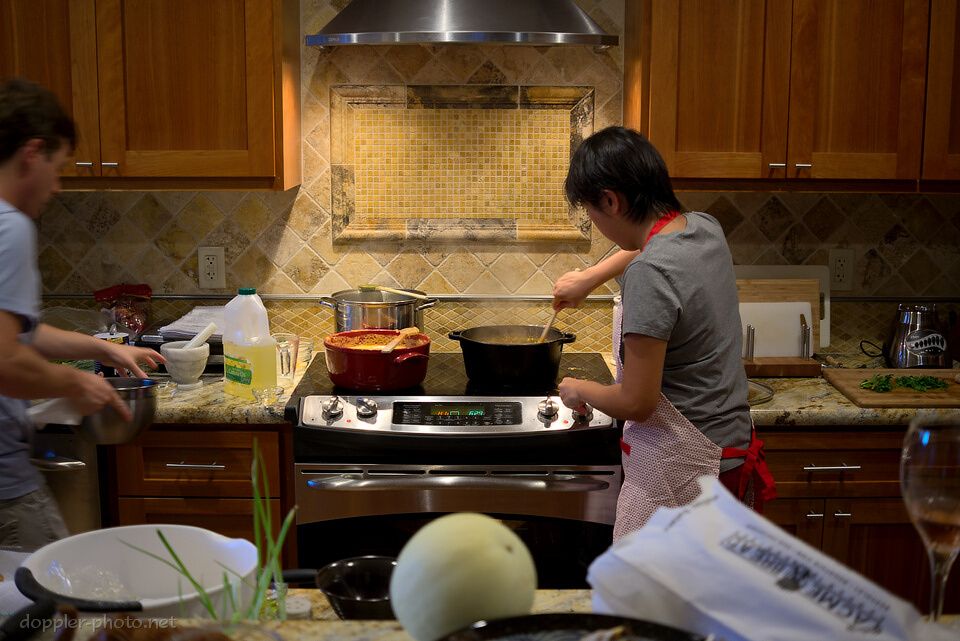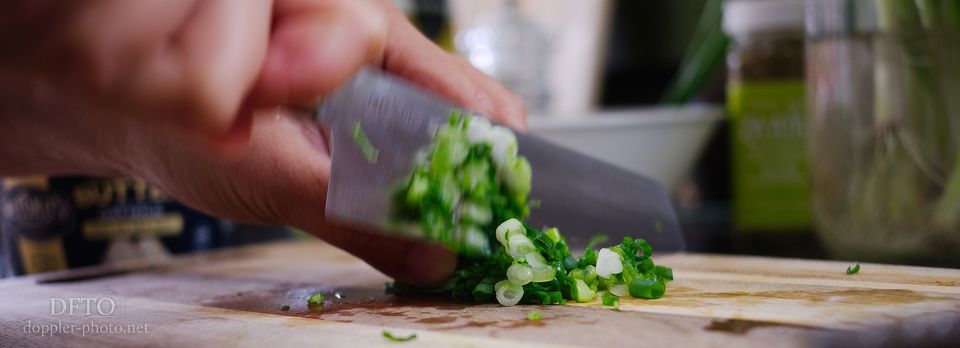
"Home" is permeated by the culture and personality of the people who spend time there. My friends Christina and Nate have created a home that is unified, in part, by a shared love of food. And I'm thankful to have been fortunate enough to participate in that tradition.
This particular evening, they created a dinner based off a set of Indian food recipes. I subsequently interviewed them in an attempt to better understand their perspective on food, and how their love of food might influence other aspects of their lives.
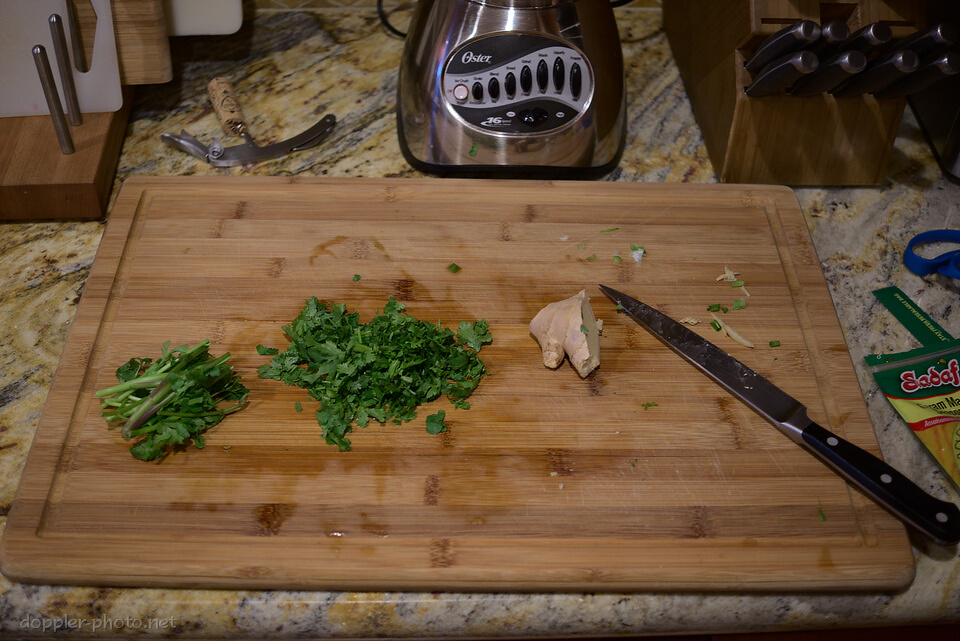
While they continued cooking, I explored the kitchen looking for moments and for vignettes that might tell a little bit of their story. This scene seemed to fit the bill.
Nate would subsequently share that he often finds the food preparation process to be satisfying, and at times meditative, as he loses himself in what he called the "technicality of preparation." It's easy to ignore all else and focus on ingredients "until [they're] just right." "Sometimes after a stressful day at work, cooking helps me relax."
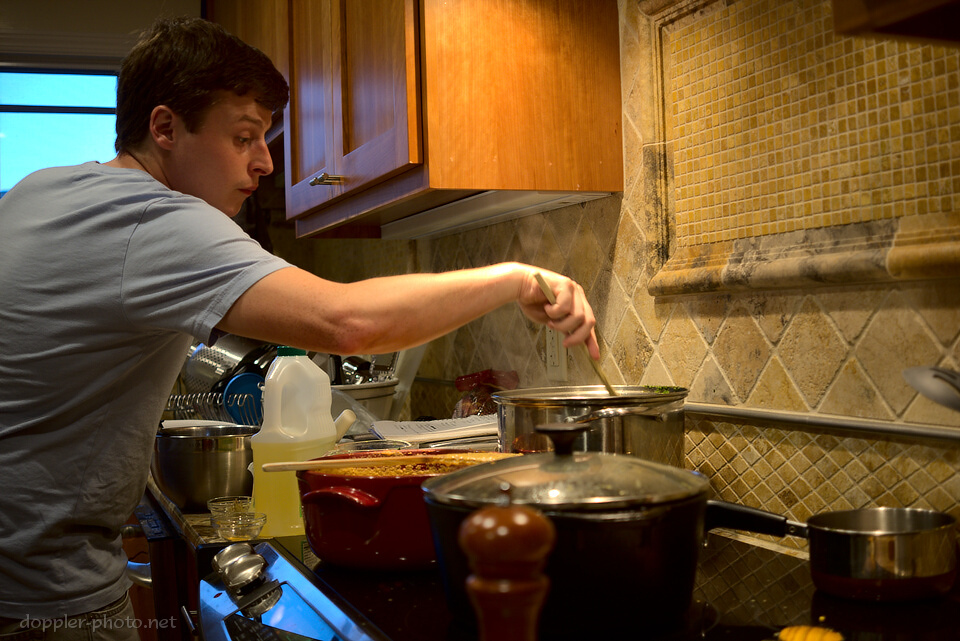
The ingredients were particularly important this time. This was Nate and Christina's third time trying to make this meal, but only the first time they were happy with the end product. "I got a feel for how to spot a bad recipe."
The key was to find recipes that called for, rather than avoided, traditional Indian ingredients that are uncommon in American cuisine. They pointed out methi leaves as one ingredient that made "all the difference" in their saag paneer.
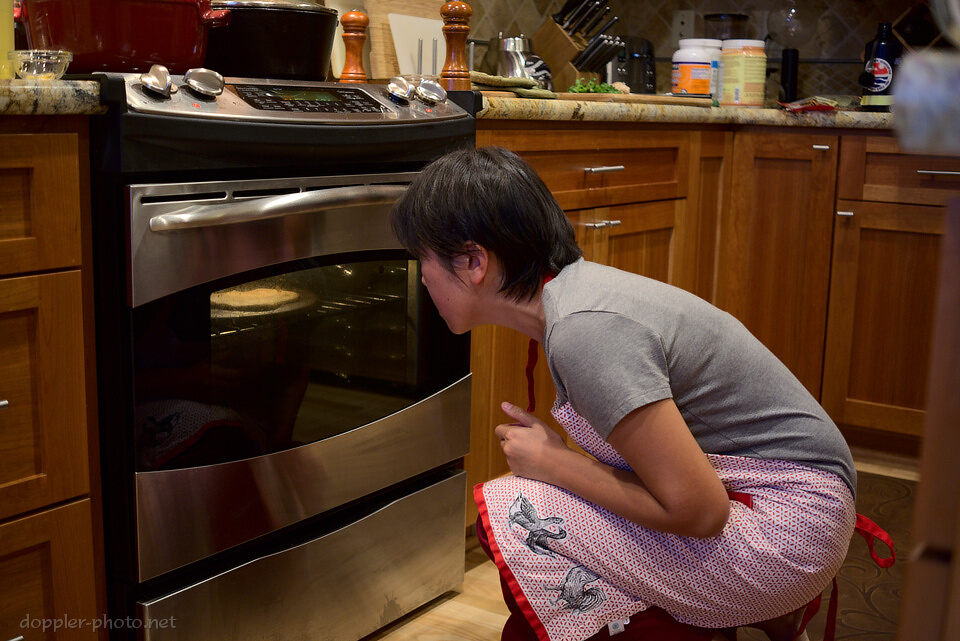
Of course, strict adherence to recipes isn't always possible or necessarily beneficial. Christina and Nate often attempt to strike a balance between repetition and experimentation. And at times, necessity is the mother of innovation. Christina spent much of the time that I was present preparing naans, and then cooking them on a pizza stone in the oven — it's the closest thing they have to an actual tandoor.
They also experiment with flavors and ingredients. Nate emphasized the strategy of determining "what's important and what's flexible." "Which flavors can be compromised and which," like the methi leaves, "are essential."
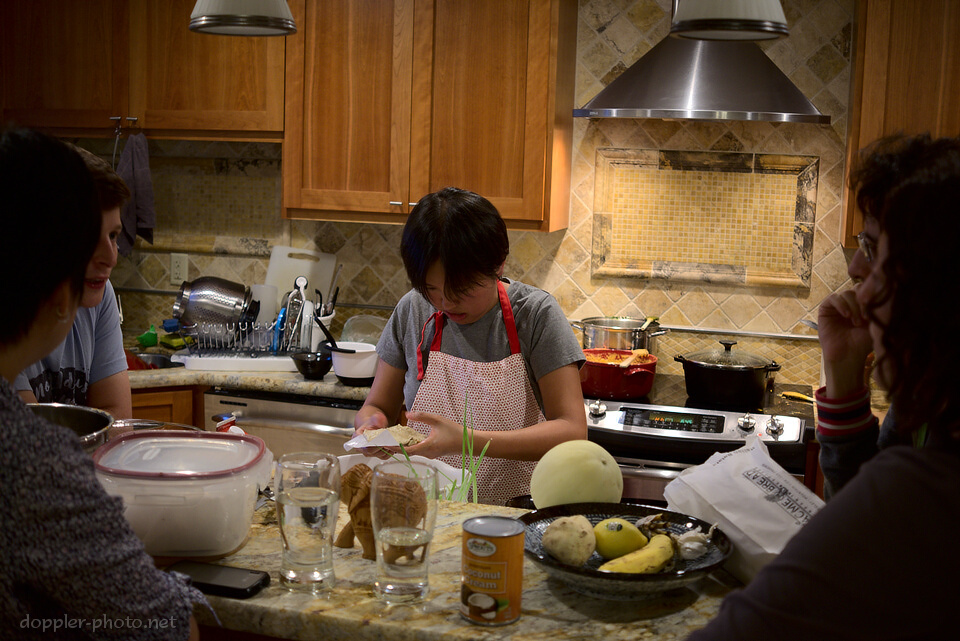
Some of their experiments are motivated by the dietary preferences of their dinner guests. The dinner we had that particular evening was completely vegan. Some of their other dinners are gluten free. When it comes to parties, they told me "we like to challenge ourselves to new things that we don't usually eat."
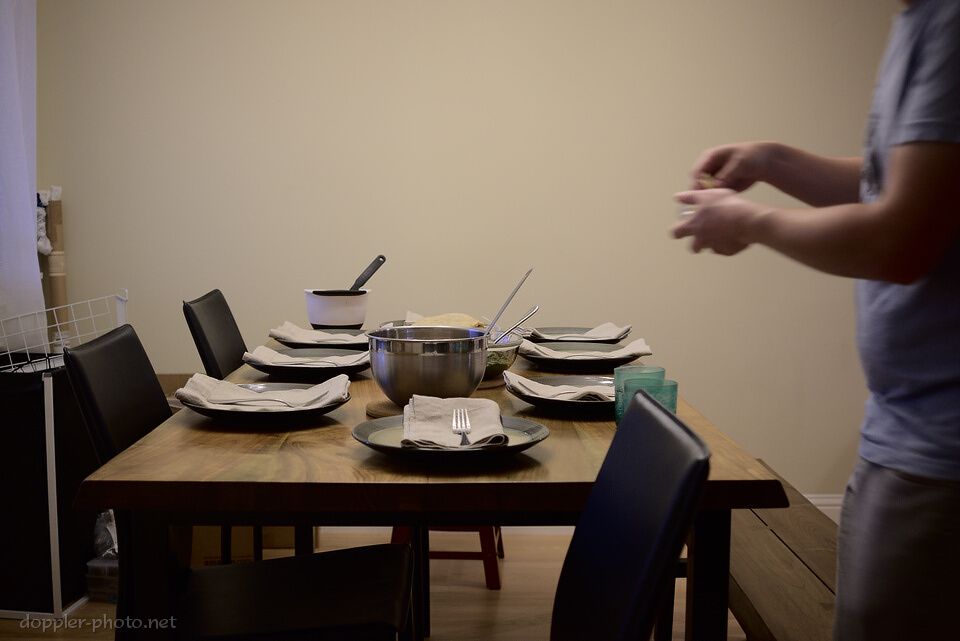
As the interview continued, our discussion meandered toward experimental ingredients that they had tried, and some that they had yet to try. They had played with various different olive varieties, and were just starting to investigate mushroom varieties.
They paused to describe the candy cap mushroom. Strong hints of cinnamon and allspice, they explained, and the smell lingers in the kitchen, but changes over time. They were also considering asafoetida, a traditional Indian herb that elicited the descriptors "savory," "oniony," and "garlicky."
At this point, Christina and Nate's own experimental urges took hold of the discussion. How could you use both ingredients in a single dish? Maybe a curry? Hmm… Moroccan? Well, Moroccan does typically include a mix of savory, sweet, and spicy flavors…
Bon appetit

